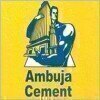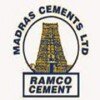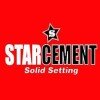Filter interviews by
Sagar Cements Interview Questions and Answers
16 Interview questions
LSF stands for Liquid Saturation Factor, used in geology to assess fluid saturation in porous rocks.
LSF = (Volume of liquid in pore space) / (Total volume of pore space)
Used to evaluate reservoir quality in petroleum geology.
Example: An LSF of 0.7 indicates 70% of the pore space is filled with liquid.
Important for understanding hydrocarbon recovery potential.
Safety-related questions focus on protocols, risk management, and emergency procedures to ensure a secure environment.
Identify potential hazards in the workplace, such as slippery floors or exposed wires.
Implement safety protocols, like wearing personal protective equipment (PPE) in hazardous areas.
Conduct regular safety drills, such as fire evacuations, to prepare staff for emergencies.
Encourage reporting of unsa...
Experience in cement silo operations includes handling, maintenance, and safety protocols to ensure efficient storage and distribution.
Managed the loading and unloading of cement from silos, ensuring minimal spillage and waste.
Conducted regular inspections and maintenance of silo equipment to prevent breakdowns.
Implemented safety protocols to protect workers from hazards associated with cement handling.
Trained new...
Workplace cleanliness and safety awareness are crucial for employee health and productivity.
Regular cleaning schedules help maintain a hygienic environment, reducing illness.
Proper waste disposal prevents hazards; for example, biohazard waste in medical settings must be handled with care.
Safety training programs educate employees on emergency procedures, such as fire drills.
Clear signage for hazardous areas ensure...
The management objective refers to the goals and targets set by the management to achieve organizational success.
Management objective is the foundation of planning and decision-making.
It helps in aligning the efforts of all employees towards a common goal.
Examples of management objectives include increasing revenue, reducing costs, improving customer satisfaction, etc.
Identify major/key requirements to meet management needs
Conduct a needs assessment to determine specific requirements
Identify resources needed to meet those requirements
Develop a plan to implement and monitor progress
Ensure alignment with organizational goals and objectives
Examples: technology, staffing, training, budget
Cement concrete is a composite material made of cement, water, fine and coarse aggregates, and sometimes admixtures.
Cement concrete is a widely used construction material.
It is formed by mixing cement, water, and aggregates like sand and gravel.
The cement acts as a binder, holding the aggregates together.
Water is added to initiate the chemical reaction that hardens the mixture.
The aggregates provide strength and s...
Our units consume approximately 5000 BTU/hr of heat, primarily using natural gas and electricity. Quality and production safety are impacted by fuel availability and combustion efficiency.
Heat consumption in our units is around 5000 BTU/hr
Primary fuels used are natural gas and electricity
Quality and production safety are impacted by fuel availability and combustion efficiency
AFR types include coal, biomass, waste, etc. TSR rate varies. WHRS power generation depends on factors like temperature, pressure, and efficiency.
Types of AFR: coal, biomass, waste, etc.
TSR rate varies based on the type of AFR used.
WHR power generation influenced by temperature, pressure, and efficiency.
To improve WHRS power, optimize temperature and pressure conditions, enhance system efficiency.
Examples: Using h...
Different types of refractories have varying performances and installation costs.
Types of refractories include fireclay, high alumina, silica, magnesite, and chrome.
Performance factors include resistance to heat, chemical corrosion, and mechanical stress.
Installation costs depend on the type of refractory, size of the area, and complexity of the installation process.
Sagar Cements Interview Experiences
31 interviews found
(6 Questions)
- Q1. Packer knowlage
- Q2. Cement sillo working expreance
- Ans.
Experience in cement silo operations includes handling, maintenance, and safety protocols to ensure efficient storage and distribution.
Managed the loading and unloading of cement from silos, ensuring minimal spillage and waste.
Conducted regular inspections and maintenance of silo equipment to prevent breakdowns.
Implemented safety protocols to protect workers from hazards associated with cement handling.
Trained new staf...
- Q3. Sefty releted Qustans
- Ans.
Safety-related questions focus on protocols, risk management, and emergency procedures to ensure a secure environment.
Identify potential hazards in the workplace, such as slippery floors or exposed wires.
Implement safety protocols, like wearing personal protective equipment (PPE) in hazardous areas.
Conduct regular safety drills, such as fire evacuations, to prepare staff for emergencies.
Encourage reporting of unsafe co...
- Q4. Dispach handling
- Q5. Manepower handling
- Q6. Work place clining and sefty awrnes
- Ans.
Workplace cleanliness and safety awareness are crucial for employee health and productivity.
Regular cleaning schedules help maintain a hygienic environment, reducing illness.
Proper waste disposal prevents hazards; for example, biohazard waste in medical settings must be handled with care.
Safety training programs educate employees on emergency procedures, such as fire drills.
Clear signage for hazardous areas ensures tha...
Interview Preparation Tips
I appeared for an interview in Apr 2025, where I was asked the following questions.
- Q1. Quality process
- Q2. Job work process
- Ans.
The job work process involves planning, execution, monitoring, and evaluation to ensure quality outcomes.
Define objectives: Clearly outline the goals of the job work process.
Plan resources: Identify and allocate necessary resources, such as personnel and materials.
Execute tasks: Implement the plan by assigning tasks to team members.
Monitor progress: Regularly check the status of tasks to ensure they are on track.
Evalua...
- Q3. Employess house process
- Q4. Quality reporting
- Q5. Quality improvement
- Q6. Manaement process
- Q7. Stable job process
- Ans.
A stable job process ensures consistent quality and efficiency through defined procedures and continuous improvement.
Define clear standard operating procedures (SOPs) to guide employees.
Implement regular training sessions to keep staff updated on best practices.
Utilize quality control metrics to monitor performance and identify areas for improvement.
Conduct regular audits to ensure compliance with established processes...
I appeared for an interview in Apr 2025, where I was asked the following questions.
- Q1. All physical testing cement
- Q2. Analysis of Raw material clinker and etc. BIS and NABL record mainten
- Q1. Esg related standards
- Q2. Cement energy efficiency
- Ans.
Cement energy efficiency focuses on reducing energy consumption in cement production, enhancing sustainability and cost-effectiveness.
Implementing alternative fuels, such as biomass or waste materials, can reduce reliance on fossil fuels.
Using energy-efficient technologies like high-efficiency separators and vertical roller mills can optimize grinding processes.
Regular maintenance of equipment ensures optimal performan...
I appeared for an interview in Nov 2024, where I was asked the following questions.
- Q1. About role and responsibilities in current position
- Q2. Why you want to switch from existing company
- Ans.
I seek new challenges and growth opportunities that align with my career goals and values, which my current role lacks.
Desire for professional growth: My current role has limited advancement opportunities, and I'm eager to take on more responsibilities.
Alignment with career goals: The new position aligns better with my long-term career aspirations in management.
Seeking a dynamic environment: I thrive in fast-paced sett...
- Q3. About the working culture
Graduate Engineer Trainee (Get) Interview Questions & Answers
posted on 10 Apr 2025
- Q1. Gear box design
- Q2. Revelation per minute in kiln
Cement plant dispatch details
Interview Preparation Tips
I applied via Recruitment Consulltant and was interviewed in Jul 2023. There were 3 interview rounds.

(5 Questions)
- Q1. Process optimization and operation related like heat , mass, air balance, powe consumption, plants improvements
- Q2. How much heat consumption in your units and which types of fuels used and what is impacted in quality and production safety related questions
- Ans.
Our units consume approximately 5000 BTU/hr of heat, primarily using natural gas and electricity. Quality and production safety are impacted by fuel availability and combustion efficiency.
Heat consumption in our units is around 5000 BTU/hr
Primary fuels used are natural gas and electricity
Quality and production safety are impacted by fuel availability and combustion efficiency
- Q3. Which types of AFR using and how much TSR rate. How much WHRS power genrated how to improve WHRS power.
- Ans.
AFR types include coal, biomass, waste, etc. TSR rate varies. WHRS power generation depends on factors like temperature, pressure, and efficiency.
Types of AFR: coal, biomass, waste, etc.
TSR rate varies based on the type of AFR used.
WHR power generation influenced by temperature, pressure, and efficiency.
To improve WHRS power, optimize temperature and pressure conditions, enhance system efficiency.
Examples: Using high-q...
- Q4. Which types of refractory use and performances what is the installation cast of refractory.
- Ans.
Different types of refractories have varying performances and installation costs.
Types of refractories include fireclay, high alumina, silica, magnesite, and chrome.
Performance factors include resistance to heat, chemical corrosion, and mechanical stress.
Installation costs depend on the type of refractory, size of the area, and complexity of the installation process.
- Q5. What is Environmental impact and aspects What is IMS system.
- Ans.
Environmental impact and aspects refer to the effects a company's activities have on the environment. IMS system stands for Integrated Management System.
Environmental impact is the result of an organization's activities on the environment, such as pollution, resource depletion, and habitat destruction.
Environmental aspects are the elements of an organization's activities, products, or services that can interact with th...
(1 Question)
- Q1. Production Quality Heat related
I appeared for an interview before Feb 2024.
(2 Questions)
- Q1. What is your work experience?
- Ans.
I have over 10 years of experience in mining operations, focusing on safety, efficiency, and team leadership.
Led a team of 20 miners in a large-scale underground operation, improving productivity by 15%.
Implemented safety protocols that reduced incident rates by 30% over two years.
Managed equipment maintenance schedules, ensuring 95% operational efficiency.
Conducted training sessions for new hires on safety practices a...
- Q2. What is the process of drilling and blasting?
- Ans.
Drilling and blasting is a method used in mining to break rock for excavation and material extraction.
Drilling involves creating holes in the rock using drill rigs.
Blasting uses explosives to fracture the rock, making it easier to remove.
The process starts with site assessment to determine the rock type and conditions.
Controlled blasting techniques minimize environmental impact and improve safety.
Example: In open-pit m...
(1 Question)
- Q1. What is the salary structure for this position?
- Q1. Quality Related
- Q2. Production & Quality
Top trending discussions






Sagar Cements Interview FAQs
Some of the top questions asked at the Sagar Cements interview -
The duration of Sagar Cements interview process can vary, but typically it takes about less than 2 weeks to complete.
Tell us how to improve this page.
Sagar Cements Interviews By Designations
- Sagar Cements Assistant Manager Interview Questions
- Sagar Cements Graduate Engineer Trainee (Get) Interview Questions
- Sagar Cements Deputy Manager Interview Questions
- Sagar Cements Engineer Interview Questions
- Sagar Cements Area Sales Officer Interview Questions
- Sagar Cements Sales Officer Interview Questions
- Sagar Cements Assistant Manager Safety Interview Questions
- Sagar Cements Technical Engineer Interview Questions
- Show more
Interview Questions for Popular Designations
Overall Interview Experience Rating
based on 37 interview experiences
Difficulty level
Duration
Interview Questions from Similar Companies
Sagar Cements Reviews and Ratings
based on 328 reviews
Rating in categories
|
Assistant Manager
55
salaries
| ₹6 L/yr - ₹10.6 L/yr |
|
Assistant Engineer
50
salaries
| ₹2.2 L/yr - ₹6 L/yr |
|
Engineer
30
salaries
| ₹4 L/yr - ₹7.1 L/yr |
|
Officer
27
salaries
| ₹4 L/yr - ₹6.6 L/yr |
|
Senior Officer
27
salaries
| ₹4.1 L/yr - ₹8.8 L/yr |

JK Cement

ACC

Ambuja Cements

The Ramco Cements
- Home >
- Interviews >
- Sagar Cements Interview Questions













